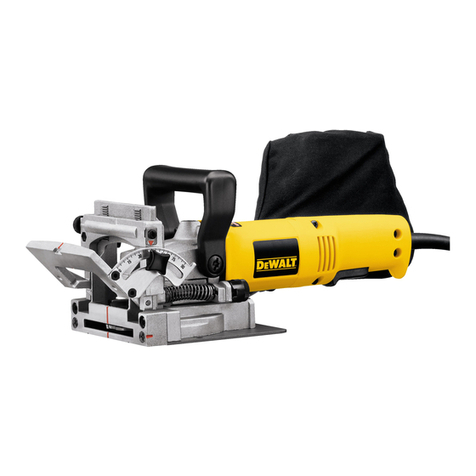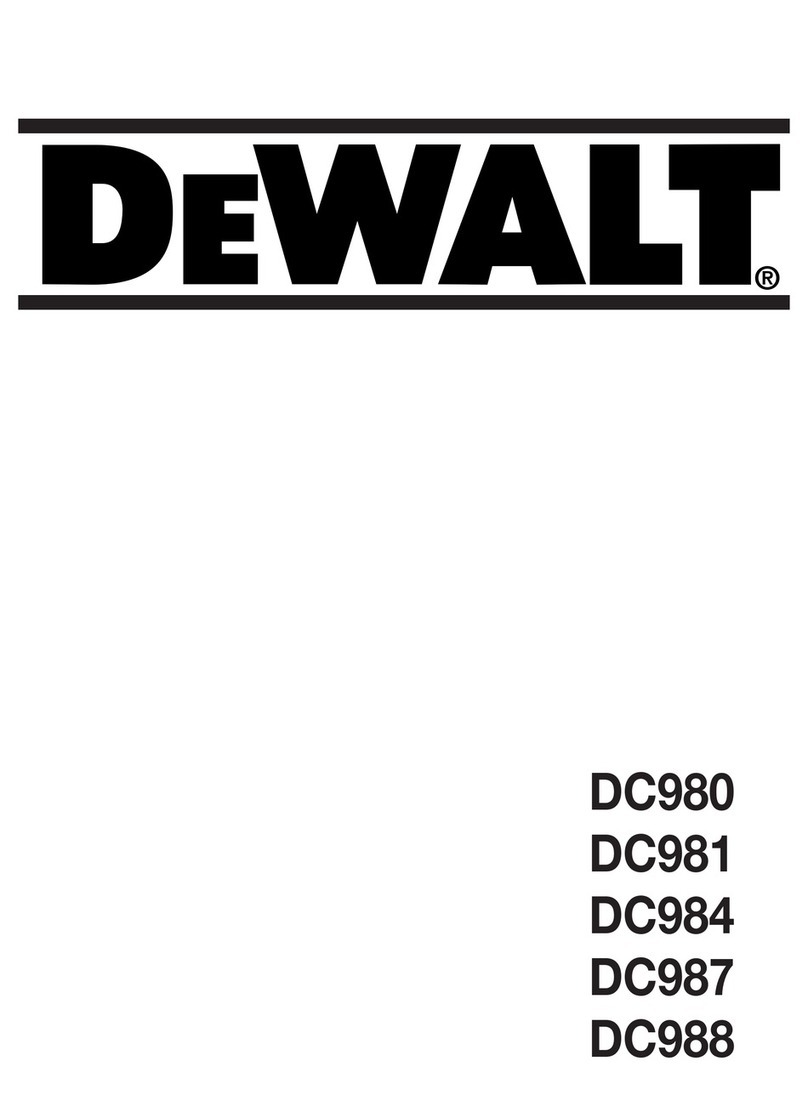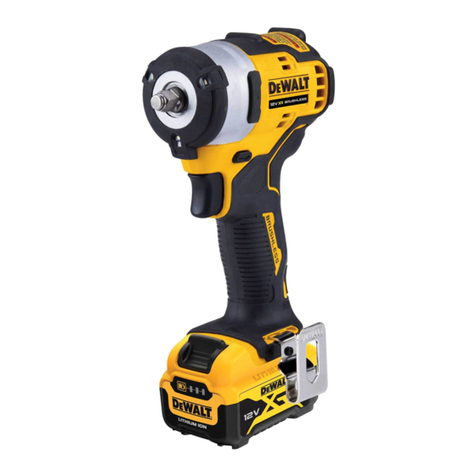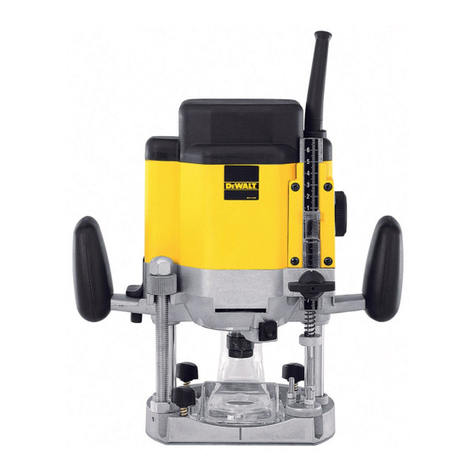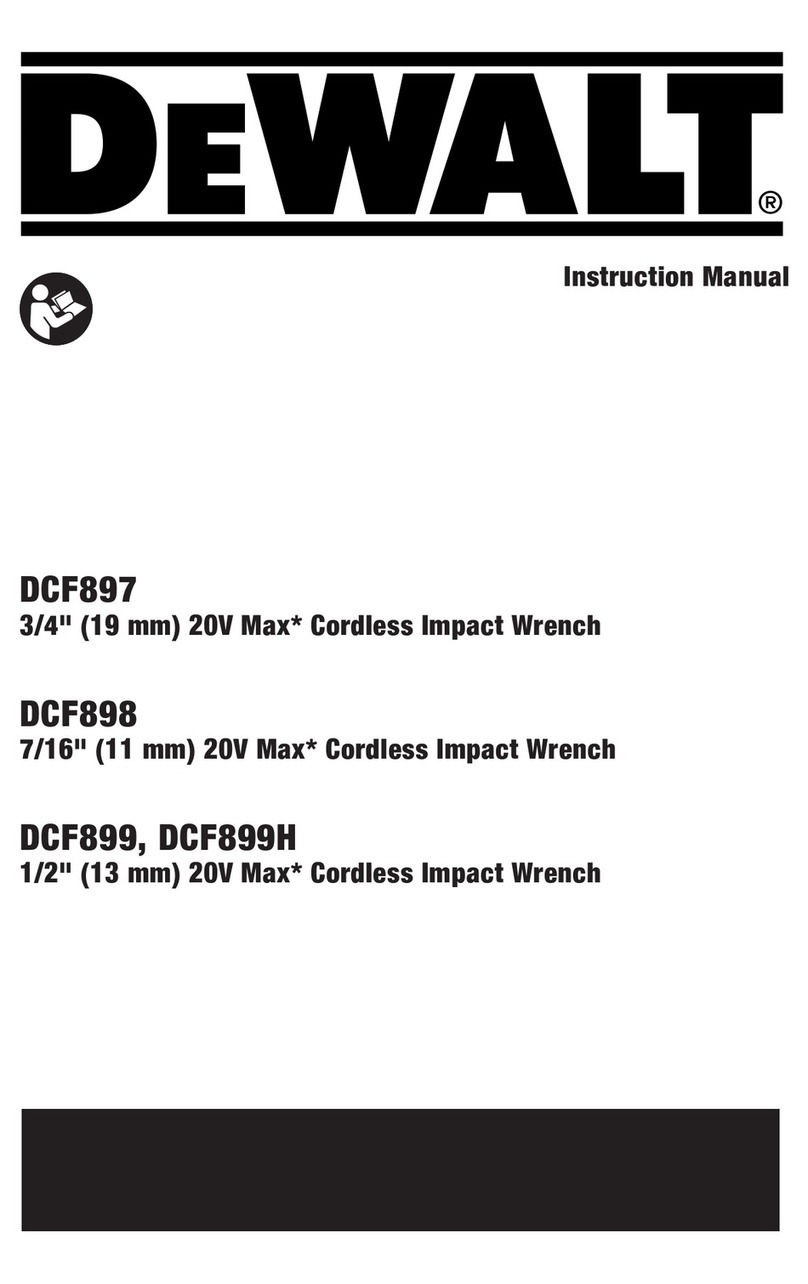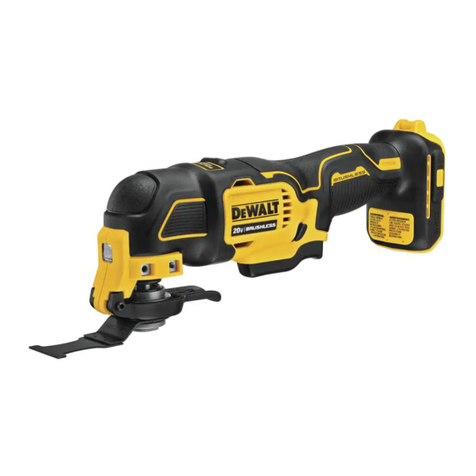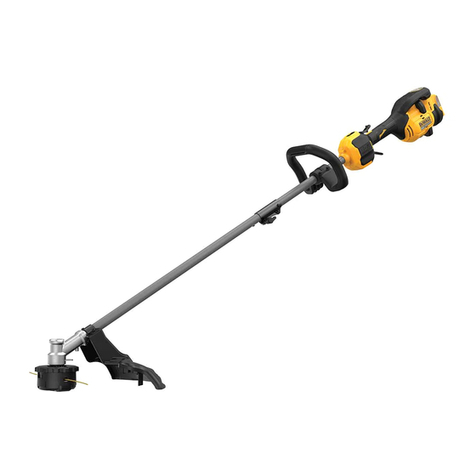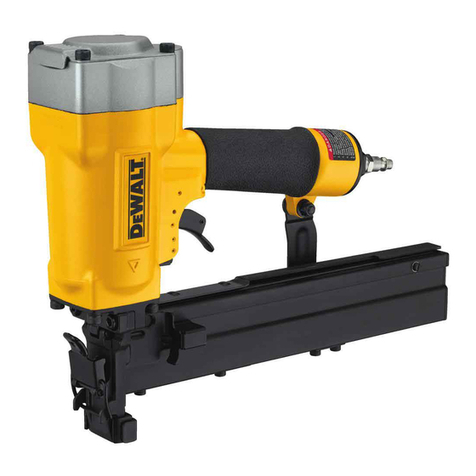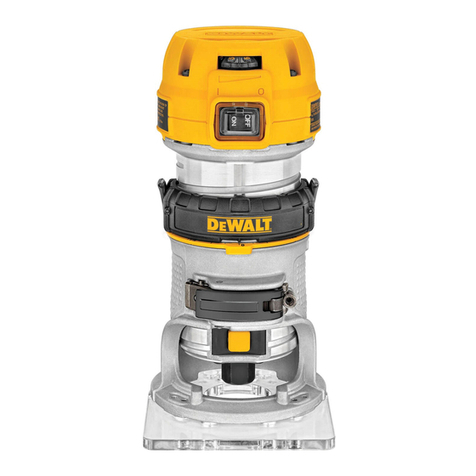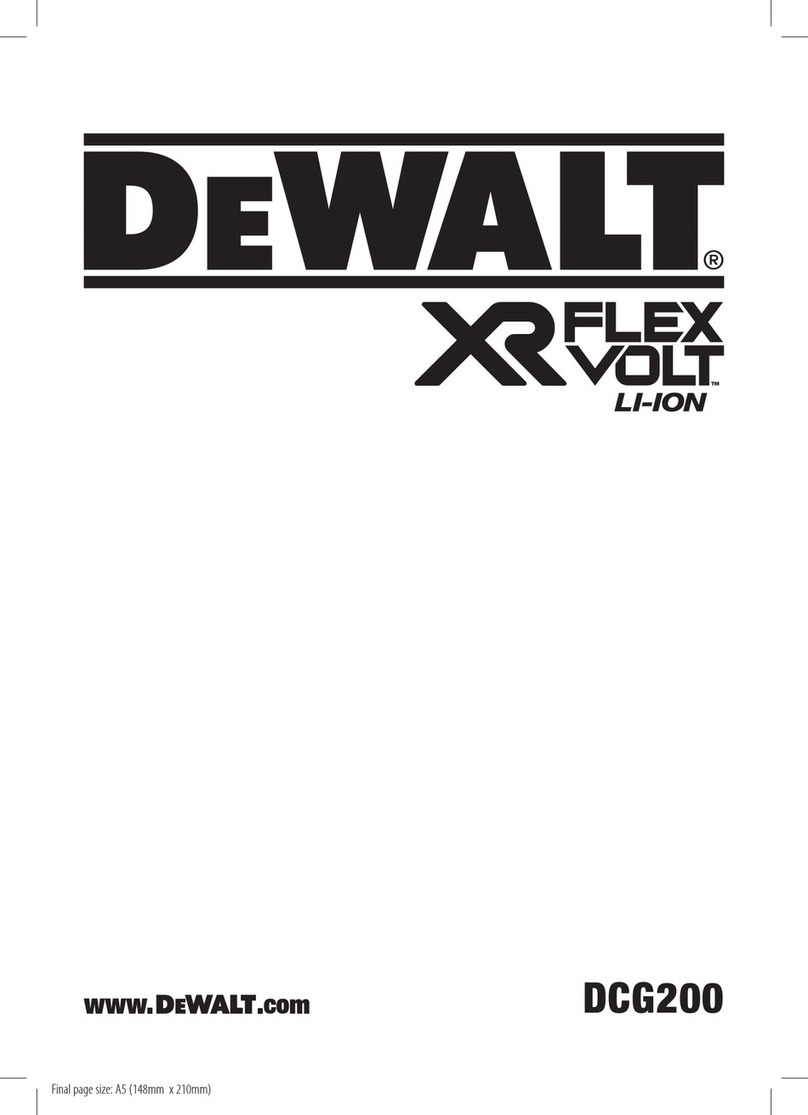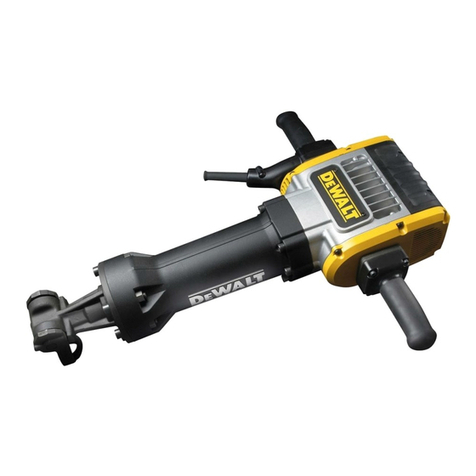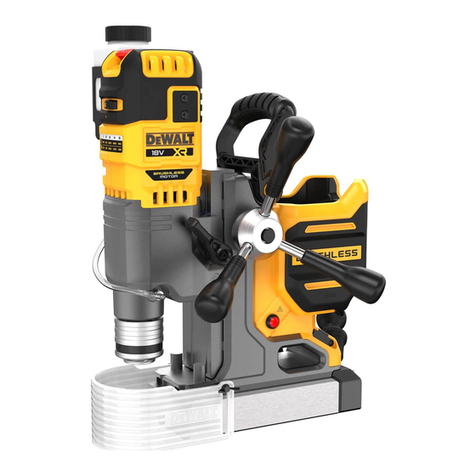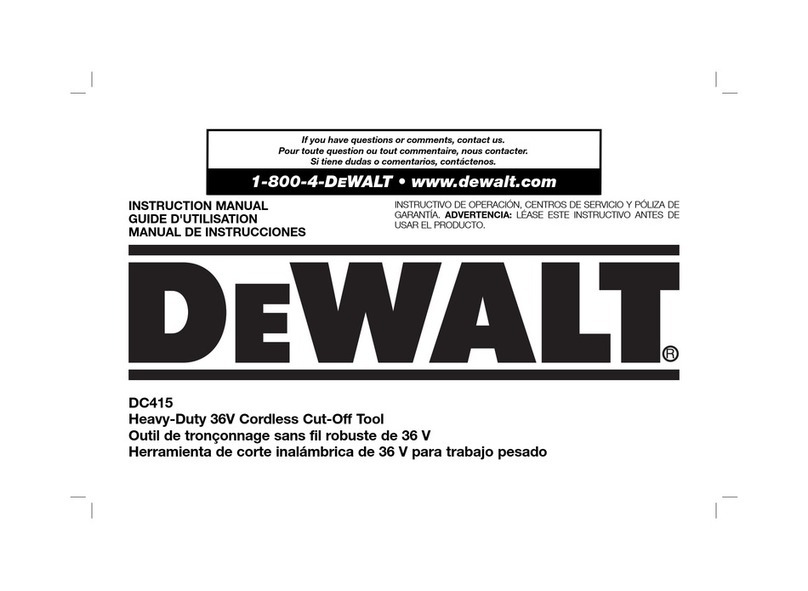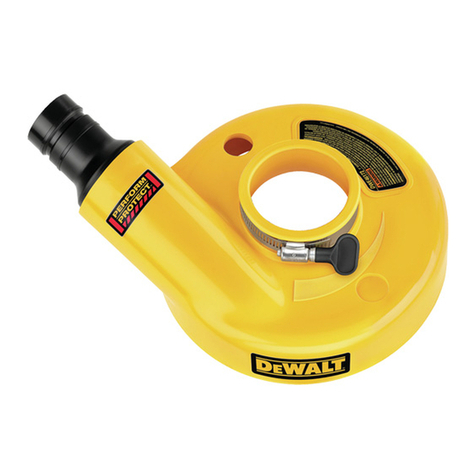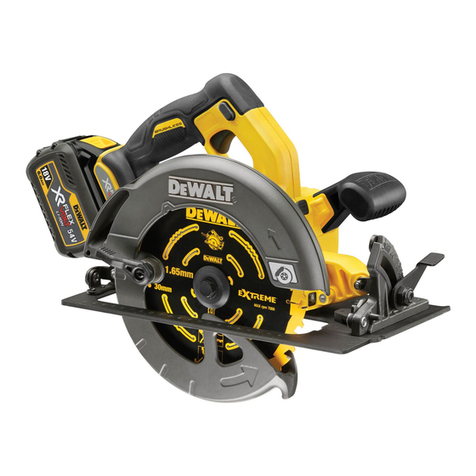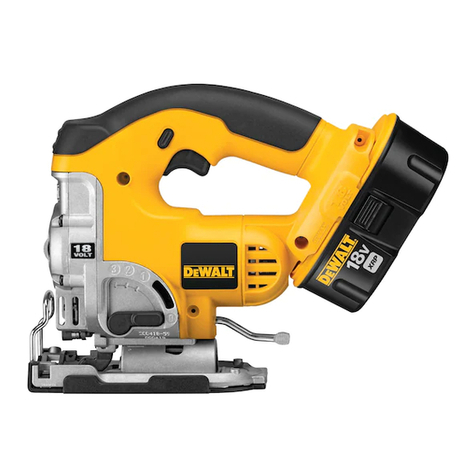
6
ENGLISH
4) Power tool use and care
a ) Do not force the power tool. Use the correct power
tool for your application. The correct power tool
will do the job better and safer at the rate for which it
wasdesigned.
b ) Do not use the power tool if the switch does not turn
it on and off. Any power tool that cannot be controlled
with the switch is dangerous and must berepaired.
c ) Disconnect the plug from the power source and/or
the battery pack from the power tool before making
any adjustments, changing accessories, or storing
power tools. Such preventive safety measures reduce the
risk of starting the power toolaccidentally.
d ) Store idle power tools out of the reach of children
and do not allow persons unfamiliar with the power
tool or these instructions to operate the power tool.
Power tools are dangerous in the hands of untrainedusers.
e ) Maintain power tools. Check for misalignment or
binding of moving parts, breakage of parts and any
other condition that may affect the power tool’s
operation. If damaged, have the power tool repaired
before use. Many accidents are caused by poorly
maintained powertools.
f ) Keep cutting tools sharp and clean. Properly
maintained cutting tools with sharp cutting edges are less
likely to bind and are easier tocontrol.
g ) Use the power tool, accessories and tool bits etc.,
in accordance with these instructions taking into
account the working conditions and the work to be
performed. Use of the power tool for operations different
from those intended could result in a hazardoussituation.
5) Battery tool use and care
a ) Recharge only with the charger specified by the
manufacturer. A charger that is suitable for one type
of battery pack may create a risk of fire when used with
another batterypack.
b ) Use power tools only with specifically designated
battery packs. Use of any other battery packs may create
a risk of injury andfire.
c ) When battery pack is not in use, keep it away from
other metal objects like paper clips, coins, keys,
nails, screws or other small metal objects that can
make a connection from one terminal to another.
Shorting the battery terminals together may cause burns
or afire.
d ) Under abusive conditions, liquid may be ejected
from the battery; avoid contact. If contact
accidentally occurs, flush with water. If liquid
contacts eyes, additionally seek medical help. Liquid
ejected from the battery may cause irritation orburns.
6) Service
a ) Have your power tool serviced by a qualified repair
person using only identical replacement parts. This
will ensure that the safety of the power tool ismaintained.
Stapler Safety Warnings
• Always assume that the tool contains fasteners. Careless
handling of the stapler can result in unexpected firing of
fasteners and personalinjury.
• Do not point the tool towards yourself or anyone
nearby. Unexpected triggering could discharge a fastener
causing aninjury.
• Do not actuate the tool unless the tool is placed firmly
against the workpiece. If the tool is not in contact with
the workpiece, the fastener may be deflected away from
yourtarget.
• Disconnect the tool from the power source when the
fastener jams in the tool. While removing a jammed
fastener, the stapler may be accidentally activated if it is
pluggedin.
• Do not use this tacker for fastening electrical cables. It is
not designed for electrical cable installation and may damage
the insulation of electrical cables thereby causing electric
shock or fire hazard.
Additional Stapler Safety Warnings
WARNING: When using any stapler, all safety precautions,
as outlined below, should be followed to avoid the risk
of death or serious injury. Read and understand all
instructions before operating thetool.
• Hold tool by insulated gripping surfaces when
performing an operation where the staple may contact
hidden wiring. Contact with a “live” wire will make exposed
metal parts of the tool “live” and shock theoperator.
• Always wear appropriate personal hearing and other
protection during use. Under some conditions and duration
of use, noise from this product may contribute to hearingloss.
• Disconnect battery pack from the tool when not in
use. Always remove battery pack and remove fasteners
from magazine before leaving the area or passing the tool
to another operator. Do not carry tool to another work area
in which changing location involves the use of scaffoldings,
stairs, ladders, and the like, with battery pack connected. Do
not make adjustments, perform maintenance or clear jammed
fasteners while battery is inplace.
• Always use trigger lock-off when tool is not in
immediate use. Using the trigger lock-off will prevent
accidentaldischarge.
• Do not remove, tamper with, or otherwise cause the
tool, trigger or trigger lock-off, to become inoperable. Do
not tape or tie trigger in the on position. Do not remove spring
from contact trip. Make daily inspections for free movement of
trigger. Uncontrolled discharge couldresult.
• Inspect tool before use. Do not operate a tool if any portion
of the tool, trigger, or trigger lock-off is inoperable,
disconnected, altered, or not working properly. Damaged
parts or missing parts should be repaired or replaced before
use. Refer toMaintenance.
• Do not alter or modify the tool in anyway.
• Always assume that the tool containsfasteners.

